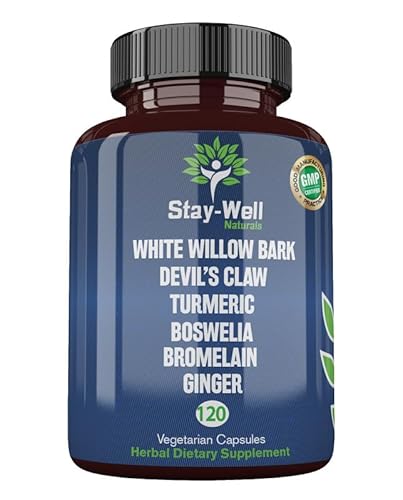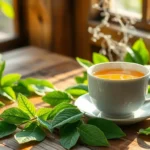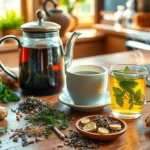We’ve all searched for natural ways to heal our bodies and minds but few healing traditions match the profound wisdom of Native American herbal remedies. For thousands of years indigenous peoples across North America have cultivated an intimate relationship with the plant kingdom developing sophisticated medicinal practices that modern science is only beginning to understand.
Today we’re rediscovering what Native American healers have always known – that nature provides powerful answers for our most common health challenges. From echinacea for immune support to willow bark for pain relief these time-tested remedies offer gentle yet effective alternatives to synthetic medications.
We’ll explore the most potent Native American medicinal plants and uncover how you can safely incorporate these ancient healing practices into your modern wellness routine. Get ready to tap into centuries of botanical wisdom that could transform your approach to natural health.
Understanding the Rich History of Native American Herbal Remedies
Native American herbal medicine represents thousands of years of accumulated wisdom that continues to influence modern healing practices. We’re exploring the foundational elements that shaped these remarkable medicinal traditions.
Traditional Knowledge Systems and Medicine Ways
Traditional Native American healing systems integrated physical, mental, spiritual, and emotional wellness long before Western medicine recognized holistic approaches. Medicine people trained for decades to master the intricate relationships between plants, seasons, preparation methods, and healing ceremonies.
Each tribe developed unique medicinal practices based on their geographic region and available plant resources. Plains tribes utilized prairie grasses and roots like echinacea and willow bark, while Pacific Northwest communities relied heavily on cedar, salmon berry, and devil’s club for their healing needs.
Knowledge transfer occurred through rigorous apprenticeships where experienced healers mentored selected individuals over many years. Students learned to identify hundreds of medicinal plants, understand optimal harvesting times, and master complex preparation techniques that preserved therapeutic compounds.
Ceremonial protocols governed every aspect of plant medicine, from respectful gathering practices to exact prayers and offerings. These sacred procedures ensured sustainable harvesting while maintaining the spiritual connection essential to effective healing.
Sacred Relationship Between Plants and Healing
Native American cultures viewed plants as sentient beings with distinct personalities, healing gifts, and spiritual teachings. This perspective created a reciprocal relationship where humans honored plant spirits through ceremonies, offerings, and sustainable harvesting practices.
Medicinal plants possessed both physical and metaphysical properties that required proper spiritual preparation to access their full healing potential. Healers understood that successful treatment depended equally on the plant’s chemical compounds and the sacred relationship established between healer, patient, and plant spirit.
Geographic locations held special significance in plant medicine, with certain healing herbs considered more potent when gathered from sacred sites or exact ecological zones. Mountain plants like osha and bear root carried different energetic qualities than those harvested from river valleys or desert regions.
Seasonal timing played crucial roles in plant potency, with experienced gatherers knowing precisely when each species reached peak medicinal strength. Spring tonics differed from autumn medicines, reflecting the natural cycles that governed both plant chemistry and human health needs.
Oral Traditions and Cultural Preservation
Oral transmission preserved Native American herbal knowledge through stories, songs, and ceremonial teachings passed down through generations. These narratives embedded practical information within cultural contexts that ensured proper understanding and respectful application of plant medicines.
Master healers used storytelling techniques to encode complex botanical information, treatment protocols, and spiritual practices into memorable narratives. Students learned medicinal properties through creation stories that explained how exact plants came to help human beings.
Tribal elders recognized certain individuals as knowledge keepers responsible for maintaining medicinal traditions and training future healers. These respected community members dedicated their lives to preserving thousands of years of accumulated healing wisdom.
Contemporary Native American communities work actively to document and revitalize traditional plant medicine knowledge that colonization and cultural disruption threatened to destroy. Language revitalization programs include botanical terminology essential for understanding traditional healing practices.
Modern research validates many traditional Native American remedies, confirming the sophisticated understanding these cultures developed about plant chemistry and therapeutic applications. This scientific validation helps preserve indigenous knowledge while demonstrating its continued relevance for contemporary health challenges.
Echinacea: The Purple Coneflower for Immune Support
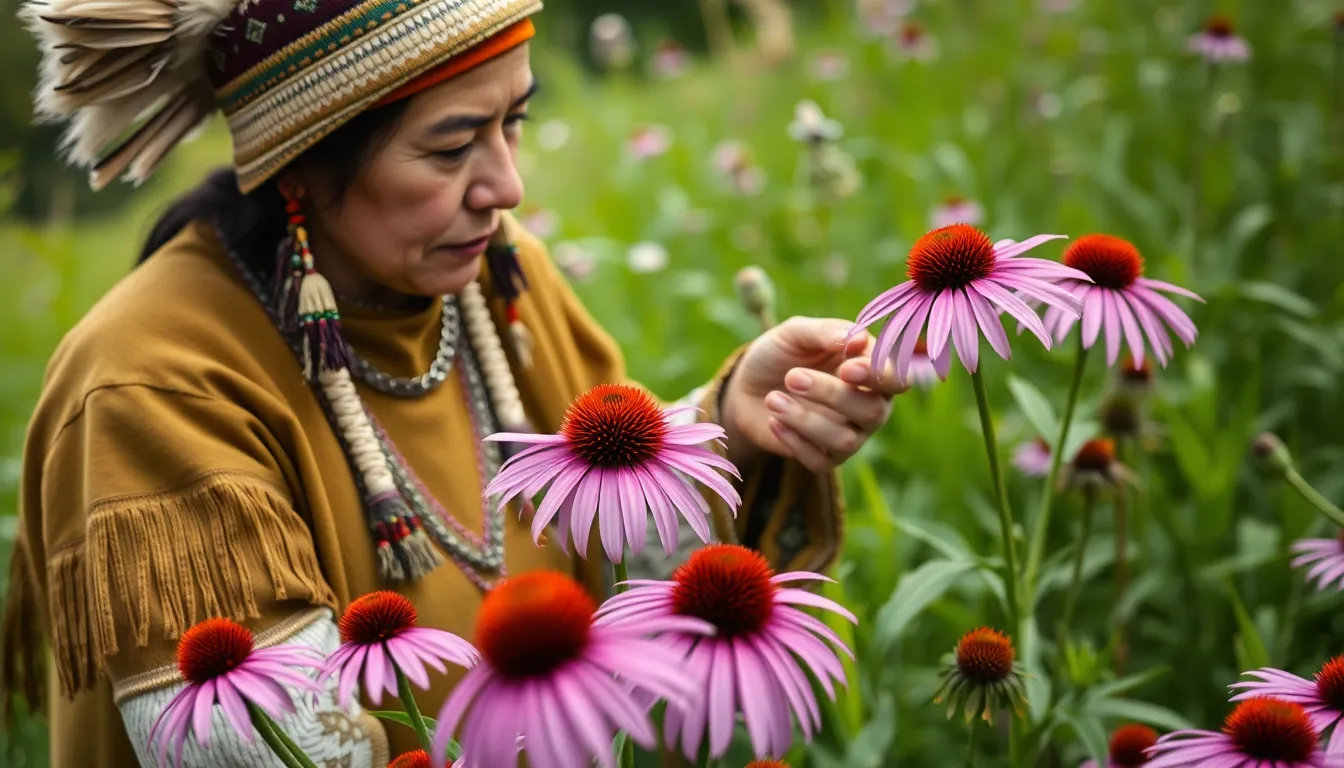
Echinacea stands as one of the most celebrated Native American herbal remedies in modern wellness practices. We’ve witnessed its remarkable journey from sacred tribal medicine to scientifically validated immune support.
Traditional Uses by Plains Tribes
Plains tribes utilized echinacea extensively to boost immune systems and treat various infections throughout their communities. Warriors and hunters relied on this purple coneflower during challenging seasons when illness threatened tribal health. Tribal healers prepared echinacea as both ceremonial teas and topical applications for wounds and skin conditions.
Different Plains tribes developed unique preparation methods based on their exact regional varieties of echinacea. The Lakota nation particularly valued echinacea for treating snakebites and respiratory ailments. Medicine keepers often combined echinacea with other sacred plants to create powerful healing blends for comprehensive wellness support.
Modern Scientific Validation
Recent studies have confirmed echinacea’s immune boosting properties that Plains tribes recognized centuries ago. Research demonstrates its ability to stimulate white blood cell production and enhance the body’s natural defense mechanisms. Clinical trials show promising results for reducing the duration and severity of common cold symptoms.
Scientists have identified exact compounds in echinacea including alkamides and polysaccharides that contribute to its therapeutic effects. Laboratory studies reveal echinacea’s anti inflammatory and antiviral properties align perfectly with traditional tribal applications. Modern validation continues to expand our understanding of this remarkable plant’s healing potential.
Proper Preparation and Dosage
Echinacea preparations range from standardized capsules to traditional teas depending on your preferred consumption method. Dosage recommendations typically fall between 300 to 500 milligrams three times daily for immune support purposes. Fresh echinacea tinctures offer concentrated potency when following traditional preparation techniques.
Healthcare providers should monitor individual dosage needs since echinacea affects people differently based on their unique health profiles. Starting with lower doses allows your body to adjust gradually to echinacea’s immune stimulating effects. Quality matters significantly when selecting echinacea products since preparation methods directly impact therapeutic effectiveness.
Willow Bark: Nature’s Original Pain Reliever
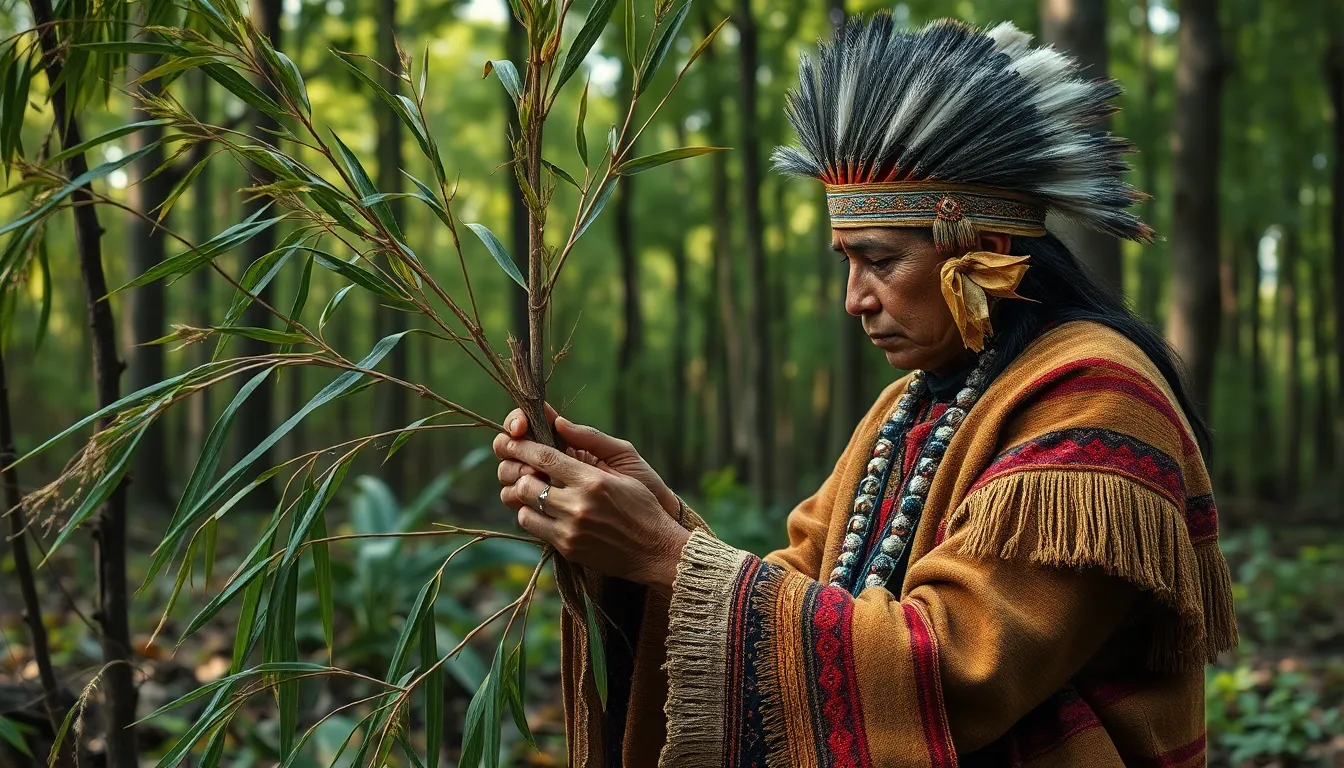
Building on our exploration of echinacea’s immune boosting properties, we turn to another cornerstone of Native American medicine that has profoundly influenced modern pain management.
Cherokee and Ojibwe Traditional Applications
Cherokee healers developed sophisticated methods for utilizing willow bark as their primary pain management tool. Traditional preparation involved harvesting bark from young willow branches during exact seasonal periods when the medicinal compounds were most concentrated. Medicine makers would carefully strip the inner bark and prepare it through various methods including direct chewing, brewing into teas, and creating concentrated decoctions.
Ojibwe communities integrated willow bark into their comprehensive pain relief protocols, particularly for treating joint aches and muscle pains that commonly affected tribal members engaged in physically demanding activities. Elders passed down precise knowledge about dosage amounts and preparation techniques through generations of hands on training. Community healers often combined willow bark with other regional plants like birch bark and wintergreen to create synergistic pain relief formulations.
Both tribes recognized willow bark’s effectiveness for treating headaches, fever reduction, and general body aches that resulted from seasonal illnesses. Traditional protocols required exact prayers and ceremonial acknowledgments before harvesting, reflecting the sacred relationship between healers and medicinal plants.
Active Compounds and Pain Management
Salicin serves as willow bark’s primary active compound, functioning as nature’s precursor to modern aspirin through its anti inflammatory properties. This powerful phytochemical converts to salicylic acid in our bodies, providing effective pain relief without many synthetic medication side effects. Research confirms that salicin concentration varies significantly among different willow species, with white willow typically containing the highest therapeutic levels.
Modern studies demonstrate that willow bark’s pain relieving effects occur through multiple pathways including COX enzyme inhibition and prostaglandin reduction. Unlike synthetic aspirin, willow bark provides sustained release benefits due to its complex plant matrix that allows for gradual compound absorption. Clinical trials have shown willow bark extract to be particularly effective for treating lower back pain, osteoarthritis symptoms, and general inflammatory conditions.
The whole plant approach used by Native American healers proves superior to isolated compounds because willow bark contains additional beneficial substances including flavonoids, tannins, and phenolic compounds that work synergistically with salicin.
Safety Considerations and Interactions
Stomach upset represents the most common side effect associated with willow bark consumption, particularly when taken on an empty stomach or in excessive doses. We recommend starting with smaller amounts to assess individual tolerance levels before increasing to therapeutic doses. People with aspirin allergies should exercise extreme caution when using willow bark since salicin shares similar chemical properties with aspirin.
Medication interactions require careful consideration, especially for individuals taking blood thinning medications, diabetes drugs, or other anti inflammatory treatments. Willow bark can enhance the effects of these medications, potentially leading to unwanted complications or excessive blood thinning. Healthcare providers should be consulted before incorporating willow bark into existing medication regimens.
Pregnant and breastfeeding women should avoid willow bark consumption due to potential risks associated with salicin exposure during critical developmental periods. Children under 16 years old should not use willow bark products because of potential Reye’s syndrome risks, similar to aspirin related concerns in young people.
Sage: The Sacred Cleansing Herb
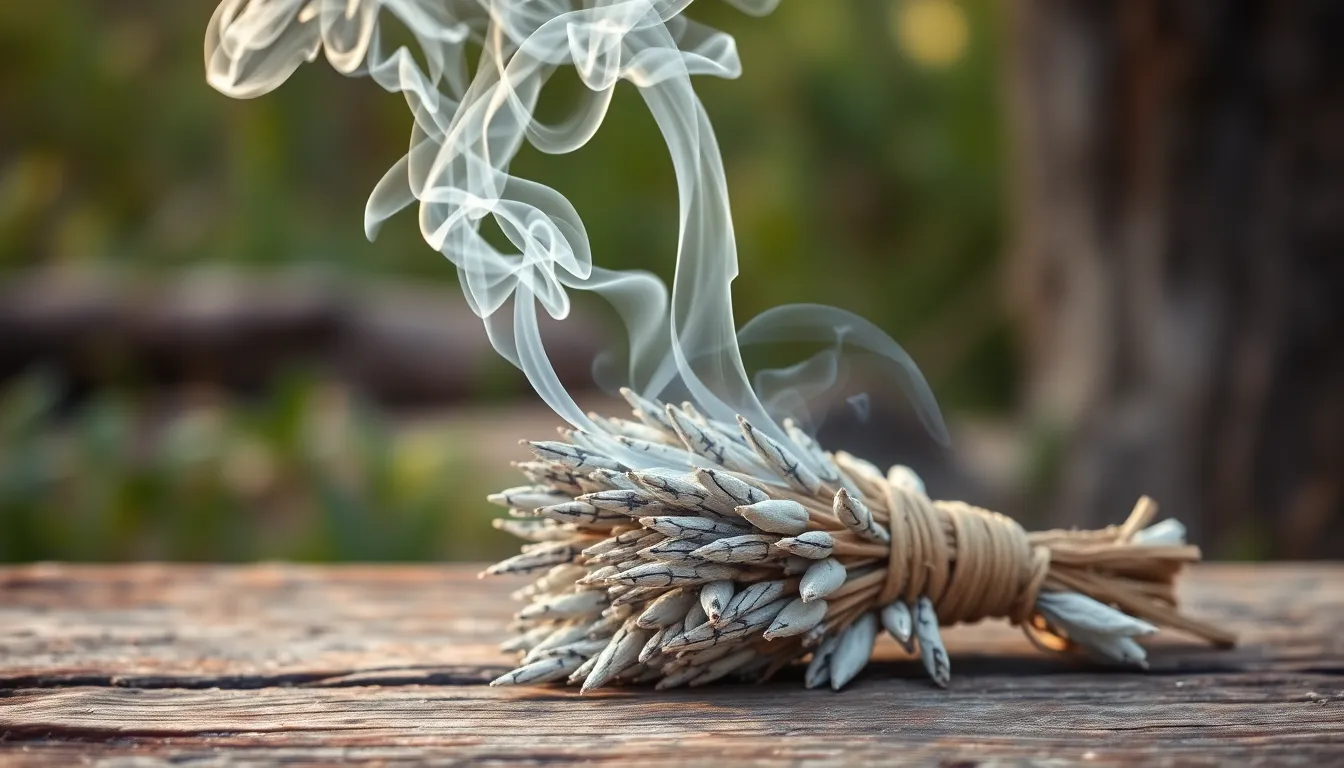
White sage stands among the four sacred plants in Native American tradition alongside sweetgrass, red cedar, and tobacco. We find this revered herb at the center of countless healing ceremonies and medicinal practices across indigenous communities.
Ceremonial and Medicinal Purposes
Purification ceremonies rely heavily on white sage’s ability to clear negative spirits and create sacred spaces for prayers and meditation. Burning sage bundles releases aromatic smoke that many tribes believe cleanses both physical and spiritual environments before important rituals.
Traditional medicine incorporates sage tea to address multiple health concerns including excessive sweating, salivation, and mucous secretions. Healers prepare the tea by steeping sage leaves in hot water to treat respiratory issues and sore throats effectively.
Stomach remedies feature sage as a powerful tonic that aids digestion and soothes gastrointestinal discomfort. We see consistent use of this preparation method across various tribal communities for maintaining digestive health.
Antimicrobial Properties and Respiratory Health
Air purification occurs naturally when sage smoke binds to harmful chemicals and neutralizes airborne pathogens. Research confirms that burning white sage can cleanse indoor air while promoting mental peace and relief from internal struggles.
Respiratory support comes from sage’s antimicrobial compounds that target sinus infections, persistent coughs, and other breathing difficulties. These natural properties make sage particularly effective for treating upper respiratory conditions that plague many individuals.
Infection fighting abilities stem from sage’s active compounds that combat harmful bacteria and viruses in the respiratory system. We observe important improvement in patients who use sage preparations for chronic sinus problems and seasonal respiratory challenges.
Different Varieties and Their Exact Uses
White sage (Artemisia californica) serves as the primary choice for smudging ceremonies and purification rituals across most Native American tribes. This variety also creates the most potent medicinal teas for treating various ailments.
Tribal applications vary significantly based on regional traditions and exact health needs:
| Tribe | Primary Use | Preparation Method |
|---|---|---|
| Blackfeet | Sweat lodge respiratory treatment | Burned in ceremonial settings |
| Dakota | Stomach trouble relief | Brewed as tea |
| Cheyenne | Sinus congestion relief | Crushed leaves as snuff |
| Crow | Skin conditions and wounds | Prepared as topical salve |
Regional varieties offer similar medicinal benefits though they’re less commonly used in traditional Native American practices. Different sage species contain varying concentrations of active compounds that influence their therapeutic effectiveness for exact conditions.
Ginseng: The Root of Vitality and Longevity
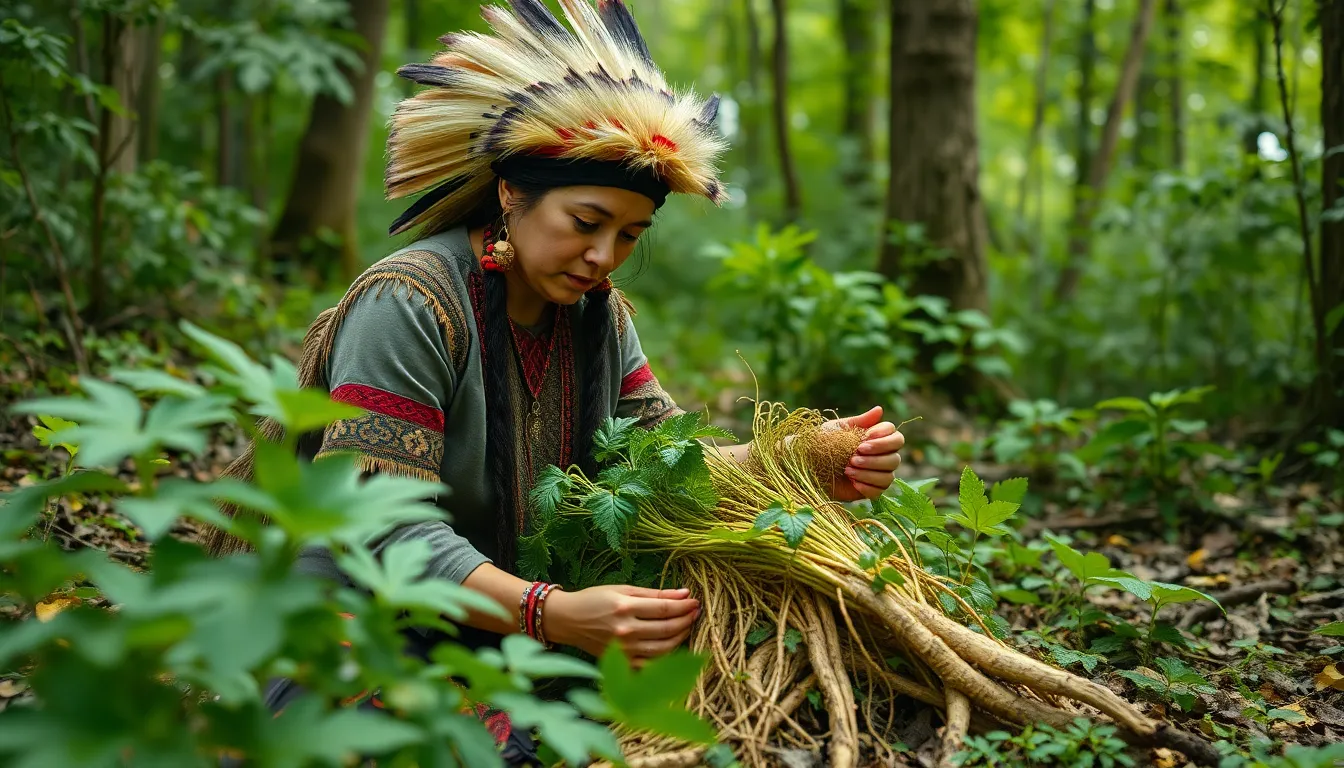
American ginseng (Panax quinquefolium) stands as one of the most revered plants in Native American healing traditions. Woodland tribes cherished this remarkable root for its extraordinary ability to restore energy and promote longevity across generations.
Woodland Tribes’ Energy Medicine
Woodland tribes integrated ginseng as a cornerstone of their energy medicine practices, viewing it as essential for maintaining holistic well-being and harmony with nature. Traditional healers prescribed ginseng for menstrual issues, severe cramps, persistent headaches, and as a powerful tonic to enhance mental clarity and prevent shock.
Respiratory conditions like asthma and emphysema received targeted treatment through carefully prepared ginseng remedies, demonstrating the plant’s versatility in addressing complex health challenges. Each tribe developed unique preparation methods that maximized ginseng’s therapeutic potential while honoring spiritual protocols surrounding its use. Sacred ceremonies often accompanied ginseng harvesting and preparation, reinforcing the deep connection between physical healing and spiritual wellness.
Adaptogenic Properties and Stress Relief
Adaptogenic compounds in ginseng enable the body to resist various types of stressors, making it invaluable for managing modern life’s demands. These properties align perfectly with traditional Native American uses for reducing stress, improving physical stamina, and supporting the body’s natural resistance to fatigue and exhaustion.
Research confirms that ginseng’s adaptogenic effects help regulate cortisol levels and improve overall stress response, validating centuries of indigenous knowledge. Our ancestors understood these mechanisms intuitively, using ginseng to maintain balance during challenging seasons and demanding physical activities. Mental clarity and cognitive function improve significantly with regular ginseng use, supporting the traditional belief in its ability to sharpen focus and enhance decision making capabilities.
Sustainable Harvesting Practices
Sustainable harvesting traditions among woodland tribes ensure ginseng’s continued availability for future generations through careful ecological stewardship. Experienced harvesters collect only mature roots while deliberately leaving younger plants undisturbed, maintaining healthy population dynamics across forest ecosystems.
Traditional protocols require harvesters to take only what they need and always give back to the earth through ceremonial offerings and replanting practices. These time-tested methods preserve ecological balance and demonstrate the sophisticated understanding Native Americans possessed about conservation principles. Seasonal timing plays a crucial role in sustainable harvesting, with experienced gatherers following natural cycles to ensure optimal root quality and minimal environmental impact.
Cedar: The Tree of Life Medicine
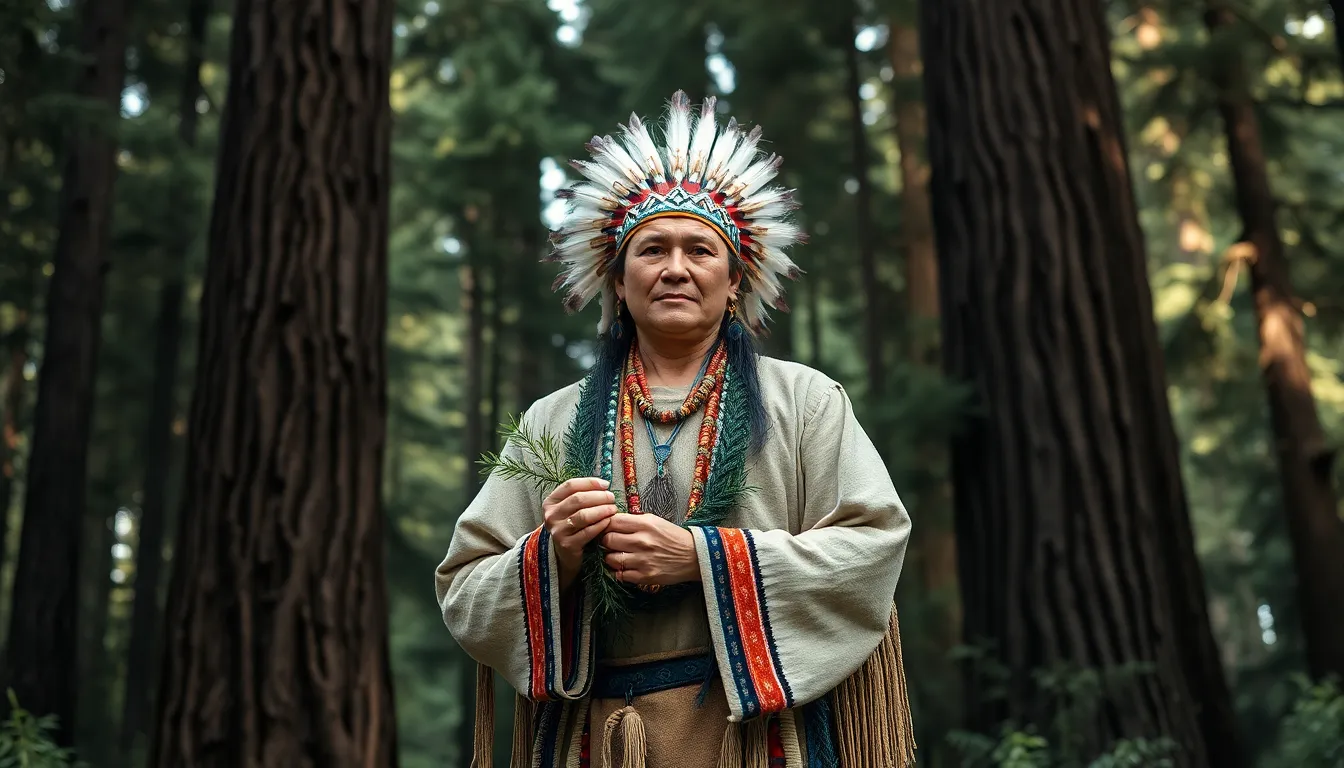
Cedar represents one of the most sacred and versatile healing plants in Native American medicine, earning its title as the “Tree of Life” across many indigenous traditions.
Pacific Northwest Tribal Traditions
Pacific Northwest tribes revere cedar as one of the Four Sacred Medicines alongside tobacco, sage, and sweetgrass. Western Red Cedar (Thuja plicata) and Eastern White Cedar (Thuja occidentalis) serve as cornerstone medicines in their healing practices. Tribes throughout this region developed sophisticated methods for utilizing every part of the cedar tree in their medicinal preparations.
Ceremonial protocols surrounding cedar use demonstrate the deep spiritual connection these communities maintain with this sacred plant. Smudging ceremonies incorporate cedar smoke to purify both body and spirit, creating protective barriers against negative energies. Traditional healers harvest cedar bark and leaves following strict seasonal guidelines that ensure the tree’s continued health and potency.
Cultural teachings passed down through generations emphasize cedar’s role as a bridge between the physical and spiritual worlds. Elders instruct apprentice healers in proper harvesting techniques that honor the tree’s spirit while maximizing therapeutic benefits. These time-tested protocols reflect thousands of years of accumulated wisdom about cedar’s healing properties.
Respiratory and Skin Healing Applications
Respiratory ailments find effective treatment through cedar’s natural expectorant properties, making it invaluable for addressing colds and bronchitis. Steam inhalation from boiling cedar leaves or bark provides immediate relief for congested airways and breathing difficulties. Traditional preparation methods involve creating potent decoctions that maximize the plant’s therapeutic compounds.
Skin conditions respond remarkably well to cedar’s antiseptic and antifungal properties, particularly for treating eczema and dermatitis. Native healers developed exact extraction techniques to concentrate cedar’s active compounds for topical applications. These preparations demonstrate effectiveness against various skin infections while promoting faster wound healing.
Bronchial congestion clears efficiently when patients inhale cedar steam under carefully controlled conditions. Tribes perfected dosing protocols that balance therapeutic benefits with safety considerations for different age groups. Traditional knowledge holders understood cedar’s dual action as both an antimicrobial agent and respiratory system strengthener.
Essential Oils and Topical Preparations
Cedar essential oils extracted through traditional methods provide concentrated healing power for aromatherapy applications. These oils deliver calming effects that effectively reduce stress and promote emotional balance in healing ceremonies. Modern extraction techniques preserve the therapeutic compounds that indigenous healers recognized centuries ago.
Topical preparations utilizing cedar oil or extracts treat skin infections with remarkable success rates. Traditional formulations combine cedar with other complementary herbs to create synergistic healing effects. Application methods vary among tribes, with some preferring direct oil application while others create healing salves.
Aromatherapy practices incorporating cedar essential oils support mental clarity and spiritual connection during healing rituals. Concentrated cedar preparations require careful dilution protocols to prevent skin sensitivity while maintaining therapeutic potency. These traditional formulations continue proving their effectiveness in contemporary wellness applications.
Goldenseal: The Golden Root for Infections
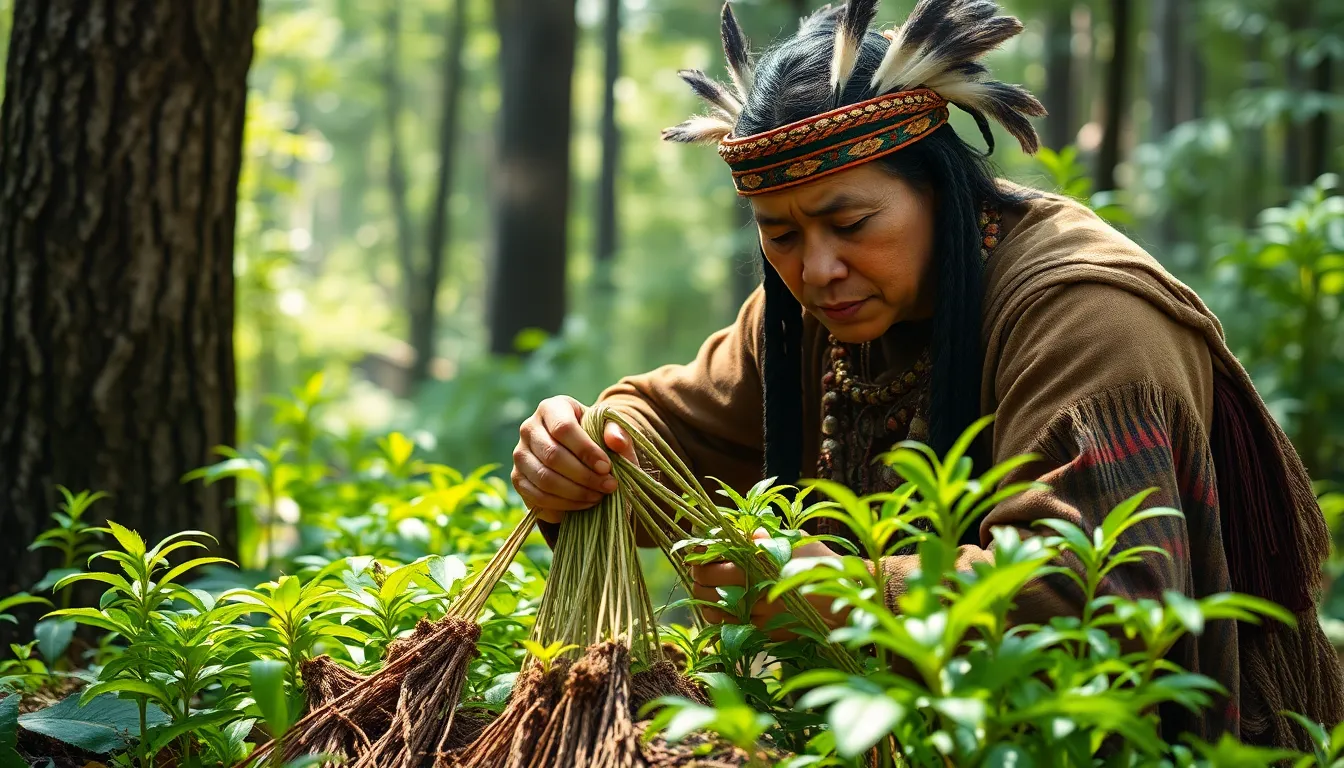
We find goldenseal standing as one of the most potent antimicrobial plants in Native American medicine. This remarkable herb earned its reputation as nature’s antibiotic through centuries of proven effectiveness against infections.
Iroquois and Cherokee Healing Practices
Iroquois healers developed sophisticated applications for goldenseal in treating eye and skin infections throughout their traditional territories. Their medicine people prepared goldenseal root decoctions specifically for conjunctivitis and various skin ailments that plagued tribal communities. Respiratory issues received special attention from Iroquois practitioners who understood goldenseal’s ability to clear congestion and fight lung infections.
Cherokee medicine traditions expanded goldenseal’s therapeutic applications beyond what other tribes discovered. Their healers prescribed goldenseal preparations for treating colds and reducing fever during seasonal illness outbreaks. Rheumatism patients found relief through Cherokee goldenseal remedies that addressed both pain and underlying inflammation. Traditional Cherokee protocols required careful root harvesting during exact seasons to maximize the plant’s healing potency.
Natural Antibiotic Properties
Natural compounds within goldenseal root create powerful antimicrobial effects that rival modern antibiotics. Berberine serves as the primary active ingredient responsible for goldenseal’s infection fighting capabilities. This alkaloid demonstrates remarkable antibacterial properties against various pathogens including streptococcus and staphylococcus bacteria.
Anti-inflammatory benefits complement goldenseal’s antimicrobial action by reducing tissue swelling and promoting faster healing. Research confirms that berberine inhibits bacterial growth while simultaneously supporting immune system function. Digestive infections respond particularly well to goldenseal treatment due to its selective action against harmful gut bacteria while preserving beneficial microorganisms.
Conservation Status and Ethical Sourcing
Endangered species status now threatens goldenseal populations due to decades of over-harvesting for commercial purposes. Wild goldenseal habitats face increasing pressure from both legal and illegal collection activities across its native range. Current conservation efforts focus on protecting remaining wild populations while promoting sustainable cultivation practices.
Cultivated goldenseal offers the most ethical alternative for obtaining this valuable medicinal plant. Responsible suppliers now provide laboratory-tested goldenseal that meets therapeutic standards without depleting wild resources. We encourage consumers to verify their goldenseal sources come from certified organic farms rather than wild-harvested specimens. Sustainable harvesting protocols require leaving mature plants undisturbed while collecting only surplus roots from established populations.
Sweetgrass: The Hair of Mother Earth
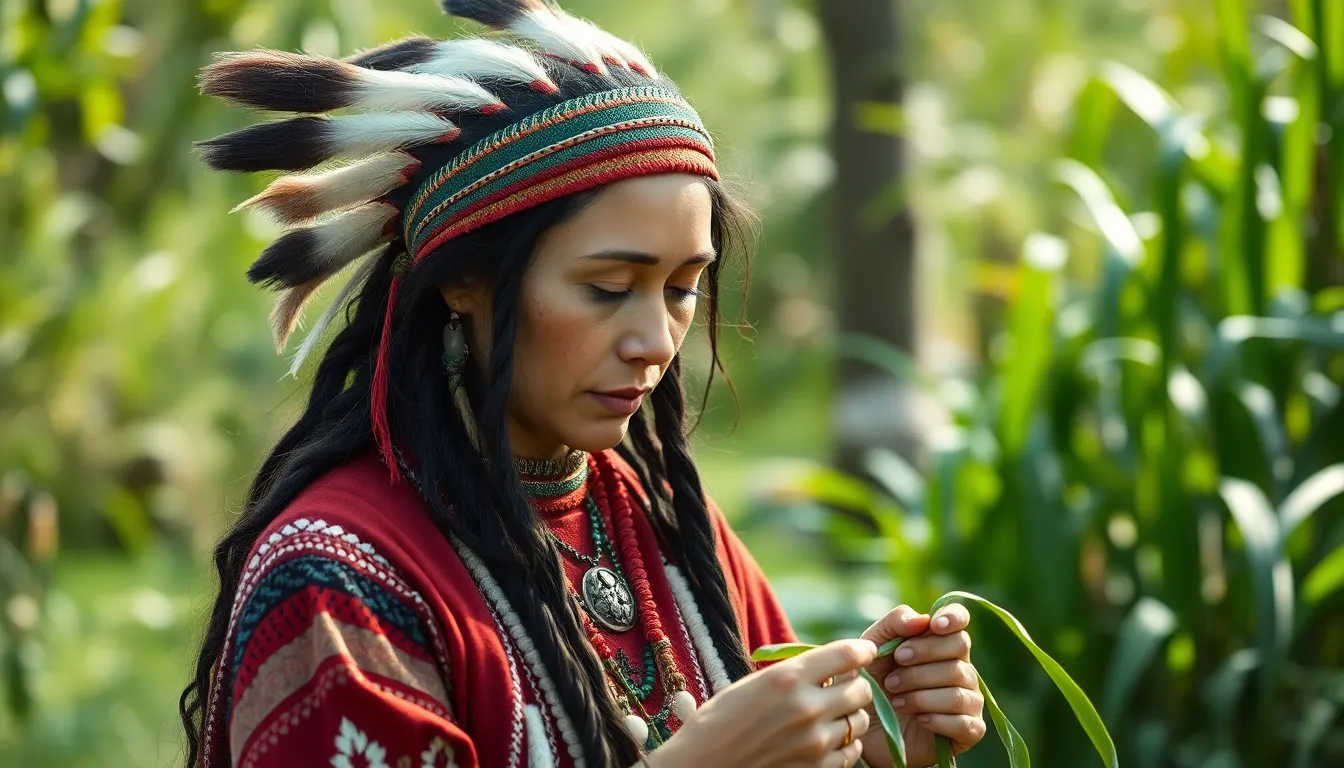
Native American communities hold sweetgrass (Hierochloe odorata) as one of their most sacred plants, cherishing its unique spiritual properties and medicinal benefits. We’ve learned that this aromatic grass serves multiple purposes within traditional healing systems, offering both physical wellness and spiritual purification.
Spiritual and Medicinal Significance
Sweetgrass carries the sacred title “the hair of Mother Earth” in Native American traditions, reflecting its deep spiritual connection to healing ceremonies. We observe how practitioners use this plant to cleanse spaces of negative energy while carrying prayers directly to the Great Spirit. Traditional healers burn sweetgrass during purification rituals, creating aromatic smoke that transforms both physical and spiritual environments.
Beyond its ceremonial role, sweetgrass delivers measurable medicinal benefits for stress relief and anxiety management. We find that sweetgrass tea produces calming effects on the nervous system, helping individuals cope with daily stressors. Practitioners prepare this tea by steeping dried sweetgrass in hot water, creating a gentle remedy that soothes both mind and body.
Digestive and Calming Benefits
Sweetgrass demonstrates remarkable effectiveness in supporting respiratory health through its natural expectorant properties. We’ve documented how traditional healers combine sweetgrass with complementary herbs like Angelica or Elecampane to clear congestion and improve breathing patterns. This combination creates a powerful respiratory support system that addresses multiple breathing challenges.
Antioxidant compounds within sweetgrass help combat free radicals while strengthening immune system function. We recognize these properties as essential for maintaining overall health and preventing cellular damage. Also, sweetgrass exhibits nervine properties that soothe digestive discomforts, particularly those triggered by stress and emotional tension.
Braiding Traditions and Ceremonial Use
Traditional braiding of sweetgrass follows exact ceremonial protocols that honor the plant’s sacred nature. We observe how practitioners create braids using three strands, symbolizing the essential balance between mind, body, and spirit. These ceremonial braids serve as tools for lighting sacred fires during important spiritual gatherings and traditional ceremonies.
Practical applications of sweetgrass extend beyond spiritual use into personal care routines and healing treatments. We find that sweetgrass preparations benefit hair care by promoting lustrous shine and supporting scalp health. Traditional practitioners also apply sweetgrass remedies to treat various skin conditions, while using it medicinally to address coughs, sore throats, and other respiratory ailments.
Bearberry: The Kinnikinnick for Urinary Health
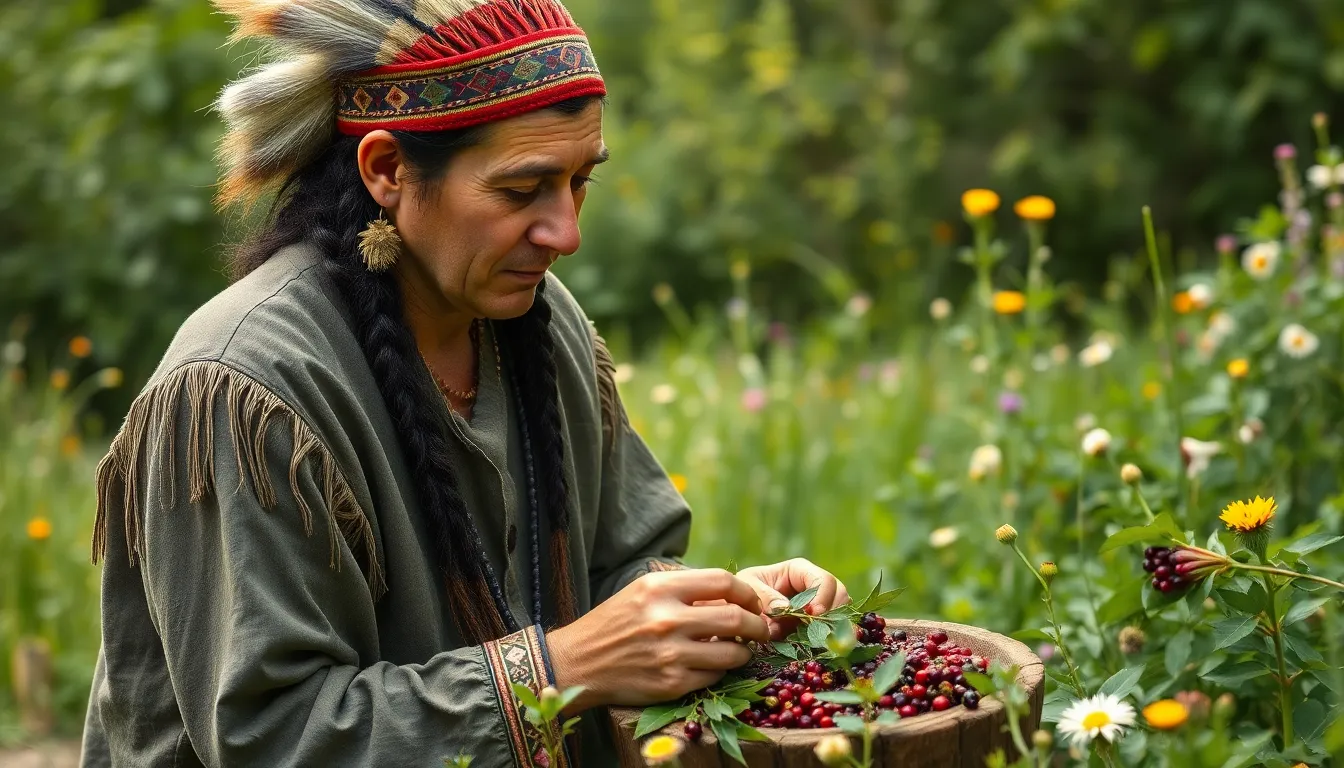
Bearberry stands as one of the most trusted plants in Native American medicine for maintaining urinary tract wellness. We find this remarkable shrub, known scientifically as Arctostaphylos uva-ursi, woven throughout the healing traditions of many tribes who recognized its powerful diuretic properties.
Traditional Smoking Blends and Teas
Native Americans incorporated bearberry leaves into ceremonial smoking blends alongside tobacco and sage for both spiritual and medicinal purposes. Various tribes created kinnikinnick mixtures that included bearberry as a primary ingredient, believing these blends could purify the body while supporting urinary health. Smoking these traditional blends wasn’t merely recreational but served as a therapeutic practice for treating respiratory ailments and promoting kidney function.
Bearberry tea represented another cornerstone of traditional preparation methods across different tribal communities. Healers would steep the dried leaves to create potent infusions that delivered the plant’s active compounds directly to the urinary system. Tribal elders often prescribed these teas during seasonal transitions when urinary infections commonly occurred.
Kidney and Bladder Support
Bearberry’s effectiveness stems from its rich concentration of arbutin, a natural compound that converts to hydroquinone in the urinary tract. This conversion creates a powerful antiseptic effect that helps prevent and treat urinary tract infections while supporting overall kidney function. Traditional healers understood that bearberry’s diuretic properties encouraged frequent urination, which naturally flushed harmful bacteria from the bladder.
Tribes throughout North America valued bearberry for treating kidney stones and reducing inflammation in the urinary system. Women particularly benefited from bearberry preparations during childbirth recovery and for managing recurring bladder infections. Modern research confirms that bearberry’s antimicrobial properties make it effective against E. coli bacteria, the most common cause of urinary tract infections.
Preparation Methods and Precautions
Traditional preparation begins with harvesting bearberry leaves during late summer when their medicinal compounds reach peak concentration. Healers would dry the leaves completely before grinding them into fine powders or storing them whole for tea preparation. Cold water extraction methods were often preferred, as excessive heat could diminish the plant’s therapeutic properties.
Dosage protocols typically involved consuming bearberry tea two to three times daily for no more than five consecutive days. Tribal healers emphasized that bearberry works best in alkaline urine conditions, so they often combined it with alkalizing herbs or recommended dietary modifications. Pregnant women and individuals with kidney disease should avoid bearberry preparations, as traditional knowledge recognized potential complications for these populations.
We recommend consulting healthcare providers before incorporating bearberry into your wellness routine, especially if you’re taking medications or managing underlying health conditions.
Respectful Use and Cultural Sensitivity in Modern Applications

As we explore these powerful herbal traditions, we must approach them with deep respect and cultural awareness. The wisdom we’ve discussed throughout this article belongs to Native American communities who’ve stewarded this knowledge for millennia.
Honoring Indigenous Knowledge and Rights
Recognizing the historical contributions of Native American healers forms the foundation of respectful herbal practice. We acknowledge that plants like echinacea, willow bark, sage, ginseng, cedar, goldenseal, sweetgrass, and bearberry weren’t simply “discovered” by modern science but were sophisticated medicines developed through centuries of careful observation and spiritual connection.
Traditional knowledge systems cover far more than plant identification and preparation methods. Indigenous healers understood complex relationships between plants, seasons, spiritual protocols, and individual constitution long before Western medicine recognized personalized treatment approaches.
Intellectual property rights deserve our utmost respect when captivating with Native American herbal traditions. Many tribes are actively working to protect their traditional knowledge from unauthorized commercialization while maintaining the integrity of their healing practices.
Sacred protocols surrounding plant collection, preparation, and use aren’t mere formalities but integral aspects of effective healing. We honor these practices by learning about the spiritual dimensions of plant medicine rather than extracting only the physical components.
Avoiding Cultural Appropriation
Appropriation occurs when we take Native American healing practices out of their cultural context without permission or understanding. Using sacred plants like white sage in wellness routines without acknowledging their ceremonial significance disrespects the traditions that gave them meaning.
Commercial exploitation of traditional remedies without involving Native communities perpetuates historical patterns of extraction and harm. We avoid supporting companies that profit from indigenous knowledge without providing fair compensation or recognition to source communities.
Ceremonial aspects of plant medicine require particular sensitivity since many healing practices are intertwined with spiritual beliefs and sacred rituals. We distinguish between plants used for general wellness and those reserved for exact ceremonial purposes within tribal traditions.
Educational responsibility means learning about the cultural context of herbal remedies rather than simply adopting preparation methods. Understanding the worldview that created these medicines deepens our appreciation and ensures more respectful engagement.
Supporting Native Communities and Herbalists
Economic support through purchasing from Native American herbalists and businesses ensures that traditional knowledge holders benefit from their expertise. We prioritize sources that maintain authentic preparation methods while supporting indigenous communities financially.
Collaborative research partnerships between scientists and tribal healers create opportunities for mutual benefit while respecting traditional knowledge. These relationships should involve Native Americans as equal partners rather than subjects of study.
Educational programs led by Native American teachers provide authentic learning opportunities while supporting cultural preservation efforts. We seek out workshops, courses, and resources created by indigenous educators rather than non-Native interpretations.
Political advocacy for Native American rights, land sovereignty, and cultural preservation supports the communities who’ve maintained these healing traditions. Environmental protection of traditional plant habitats ensures future generations can continue these practices.
Documentation projects initiated and controlled by Native communities help preserve traditional knowledge while maintaining cultural ownership. We support tribally led efforts to record and protect their herbal wisdom for future generations.
Conclusion
We’ve explored the profound wisdom embedded in Native American herbal traditions – from echinacea’s immune-boosting power to goldenseal’s antimicrobial strength. These time-tested remedies offer us natural pathways to wellness that have sustained indigenous communities for millennia.
The journey through plants like willow bark sage ginseng and sweetgrass reveals how traditional knowledge continues to validate modern scientific discoveries. We’re witnessing a remarkable convergence where ancient wisdom meets contemporary research.
As we integrate these powerful healing plants into our modern lives we must approach them with the respect and cultural sensitivity they deserve. Supporting Native communities and practicing sustainable harvesting ensures these precious traditions remain available for future generations.
The path forward lies in honoring the sacred relationship between humans and plants while embracing the therapeutic potential these natural medicines offer our contemporary wellness practices.
Frequently Asked Questions
What are Native American herbal remedies?
Native American herbal remedies are traditional medicinal practices developed by indigenous tribes over thousands of years. These natural healing methods use plants and herbs to treat various health conditions, integrating physical, mental, spiritual, and emotional wellness. Each tribe developed unique practices based on their geographic region and available plant resources.
How effective are Native American herbal medicines compared to modern treatments?
Modern research increasingly validates Native American herbal remedies, confirming their therapeutic effectiveness. Many traditional herbs like echinacea, willow bark, and goldenseal have scientifically proven properties that support immune function, pain relief, and antimicrobial action. These natural alternatives often provide benefits with fewer side effects than synthetic medications.
What is echinacea and how was it traditionally used?
Echinacea is a celebrated Native American herbal remedy used by Plains tribes to boost immune systems and treat infections. The Lakota nation valued it for treating snakebites and respiratory ailments. Modern science confirms echinacea’s ability to stimulate white blood cell production and reduce cold symptom severity.
How is willow bark related to modern aspirin?
Willow bark contains salicin, nature’s precursor to modern aspirin. Cherokee and Ojibwe healers used it for headaches, joint aches, and body pains. Clinical trials show willow bark’s effectiveness for lower back pain and osteoarthritis, providing pain relief through multiple pathways with fewer side effects than synthetic alternatives.
What makes sage sacred in Native American traditions?
White sage is sacred for its purification properties, with aromatic smoke believed to cleanse negative spirits and create sacred spaces. Medicinally, sage tea treats respiratory issues and digestive health. Its antimicrobial properties support respiratory health and combat infections, making it valuable for both spiritual and physical healing.
What are the benefits of American ginseng?
American ginseng (Panax quinquefolium) was revered by woodland tribes for restoring energy and promoting longevity. It treats menstrual issues, headaches, and respiratory conditions. Research confirms its adaptogenic properties help manage stress, improve mental clarity, and regulate cortisol levels while enhancing stamina and resilience.
Why is cedar called the “Tree of Life”?
Cedar is revered as the “Tree of Life” by Pacific Northwest tribes who use every part medicinally. Its natural expectorant properties treat respiratory ailments, while antiseptic and antifungal qualities address skin conditions. Cedar essential oils provide aromatherapy benefits and calming effects in topical preparations.
What makes goldenseal “nature’s antibiotic”?
Goldenseal contains berberine, providing powerful antimicrobial and anti-inflammatory effects. Iroquois and Cherokee healers used it for infections, eye and skin ailments, respiratory issues, and seasonal illnesses. Its potent antimicrobial properties make it one of the most effective natural alternatives to synthetic antibiotics.
How is sweetgrass used spiritually and medicinally?
Sweetgrass, “the hair of Mother Earth,” is used in purification rituals to cleanse negative energy and carry prayers. Medicinally, sweetgrass tea provides stress relief and respiratory support through its calming effects on the nervous system. Its antioxidant properties also strengthen the immune system.
What is bearberry and how does it support urinary health?
Bearberry (Arctostaphylos uva-ursi) is trusted for urinary tract wellness due to its diuretic properties. It contains arbutin, which converts to hydroquinone in the urinary tract, providing antiseptic effects. Traditional preparations include kinnikinnick smoking blends and teas for purifying the body and supporting kidney function.
How can I respectfully use Native American herbal knowledge?
Respectful use requires acknowledging historical contributions, avoiding cultural appropriation, and understanding spiritual contexts. Support Native communities through economic means, collaborate in research, and participate in educational programs led by Native teachers. Always consult healthcare providers before using traditional remedies and advocate for Native rights and environmental protection.
Are there safety concerns with traditional herbal remedies?
Yes, herbal remedies can have side effects and interact with medications. Pregnant women, children, and people with health conditions should exercise caution. Quality sourcing is crucial, and individual health profiles affect effectiveness. Always consult healthcare providers before incorporating traditional remedies into your wellness routine.





